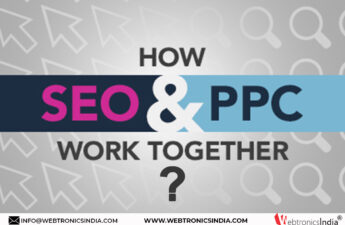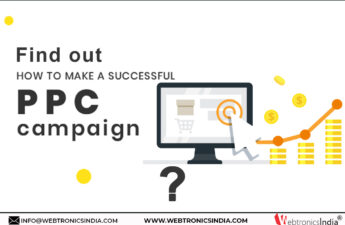It wouldn’t be wrong to say that Digital Advertising has made it a lot easier, cheaper, and faster to advertise your products. With more and more users spending time on the internet, online advertising is the best way to promote your product or service and showcase your offers. A wise PPC expert does proper research and makes necessary adjustments in the ad copy to reach the right kind of audience.
Google Ads, Facebook Ads, and LinkedIn Ads are the most popular online advertising platforms today. The key to success in the digital space is to pick the right platform that promises you the best ROI. It depends on a number of factors like the type of business, the goals of the business, and the company budget. Google Ads, Facebook Ads, and LinkedIn Ads were launched at different times for different purposes and different types of consumers.
In this blog, we will learn about Google Ads vs Facebook Ads vs LinkedIn Ads.
What are Google Ads?
Google Ads is an advertising platform where you can target ads based on what users are looking for in Google. On this platform, your ad can be in the form of an image, text, call, or video. You can also use filters like gender, age, country, and demographics.
- Text Ads– In-text ads, you can advertise your product or service by targeting search phrases and keywords. Therefore, if a user searches for the targeted term, your ad will show up in the search results. In-text ads, you must pick the right keywords to target the audience for your business.
- Image Ads – An image ad consists of an image that provides details about your product or service. When a user clicks on your ad, they will be taken to the landing page. These types of ads appear on web pages or other areas in the Display Network.
- Video Ads – In these ads, Google plays your video ad on its partner sites or YouTube based on your settings, goals, and type of content you wish to promote.
- Call Ads – Google brings phone calls to your business with the help of ads that include your contact number. The users will click on this ad and can communicate with you directly.
- Product Cart Ads – Your ad will be shown to users who are shopping online for your product or similar products.
Must Read -: What is PPC? Learn the Basics of PPC Marketing
What are Facebook Ads?
Facebook Ads help you target your customers based on gender, age, language, the type of activities they perform on the app, or the lookalike audience. On Facebook, you can showcase your ads using a video, image, slideshow, carousel, collection, and experience.
- Photo Ads – Fb allows you to display engaging photo ads on your targeted user’s feed, their messenger, or their stories.
- Video Ads – You can show a video ad to your target Facebook users on their story or feed.
- Playables – These types of ads offer an interactive preview to the users on FB before they download an app.
- Slideshow – These are video-like ads made of sound, motion, and text.
- Carousel – These ads let you display up to 10 videos or images in a single ad, each with its own link.
- Collection – These are a mobile-only format that is designed to improve the mobile user experience. Users clicking on these ads are taken to a full screen and fast-loading experience to learn more about the ad.
What are LinkedIn Ads?
LinkedIn Ads can be targeted based on location, name of the company, company industry, the school, years of experience of a particular skill, target groups, and age.
- Text Ads – LinkedIn shows text ads on the side rail or inline. It is only available for desktop LinkedIn users.
- Sponsored Content – This type of ad appears along with the content the members of LinkedIn create for themselves. They can be called promoted posts as they are the amplified versions of the media, links, messaging, etc.
- Sponsored InMail – This feature can be used to send personalized messages to highly targeted recipients. They are only delivered to active LinkedIn members. The content can be tailored directly to the audience and the ‘call to action button can always be seen on any device due to the responsive design.
Difference Between Google Ads, Facebook Ads, and LinkedIn Ads
Now that you know the definition and basics of the above 3 platforms, let’s understand the difference between Google Ads, Facebook Ads, and LinkedIn Ads.
Google AdWords – The All-Rounder
Google has been in the paid advertising field for a long time now. So it wouldn’t be wrong to call it a leader in the PPC ads. Google AdWords is used worldwide and has great targeting opportunities. But due to its popularity, the bids on popular keywords can be pretty high.
As a PPC expert, you will have to expand your budget if you wish to include a popular keyword in your campaign.
Facebook Ads – A Lot of Variables and Great Reach
Facebook ads are a great platform if you can get it right and find what you need. You may end up paying very little for a click for one post and 5-8 times as much for another one. You will need experience, time, and detailed experimentation to get it right.
Fb ads offer great reach to all businesses. You can reach a large number of specific sets of people due to its granular targeting system and the billion users database. The only criteria are to target the right type of audience at the right time.
LinkedIn Ads – Best for B2B (Business to Business)
Unlike Google Ads and Facebook Ads, LinkedIn isn’t the cheapest advertising platform. It isn’t the biggest network in the world and doesn’t have the best targeting options. But if you are targeting B2B clients, LinkedIn is a great option.
If you are running a serious business ad and wish to target other businesses, LinkedIn is the best platform to launch your campaign.
Summing Up
Online advertising is a continuous process and requires sufficient trial and error to gain perfection. As a beginner, you may get lucky once in a while but it takes enough experimentation and experience to become a successful online advertising expert.
Also, choosing the right ad platform – Google Ads or Facebook Ads or LinkedIn Ads is crucial to make the most of your ad campaign. You should set aside a little extra in the budget, do a thorough analysis and track your ad results. Eventually, you will find the platform that works the best for you.




